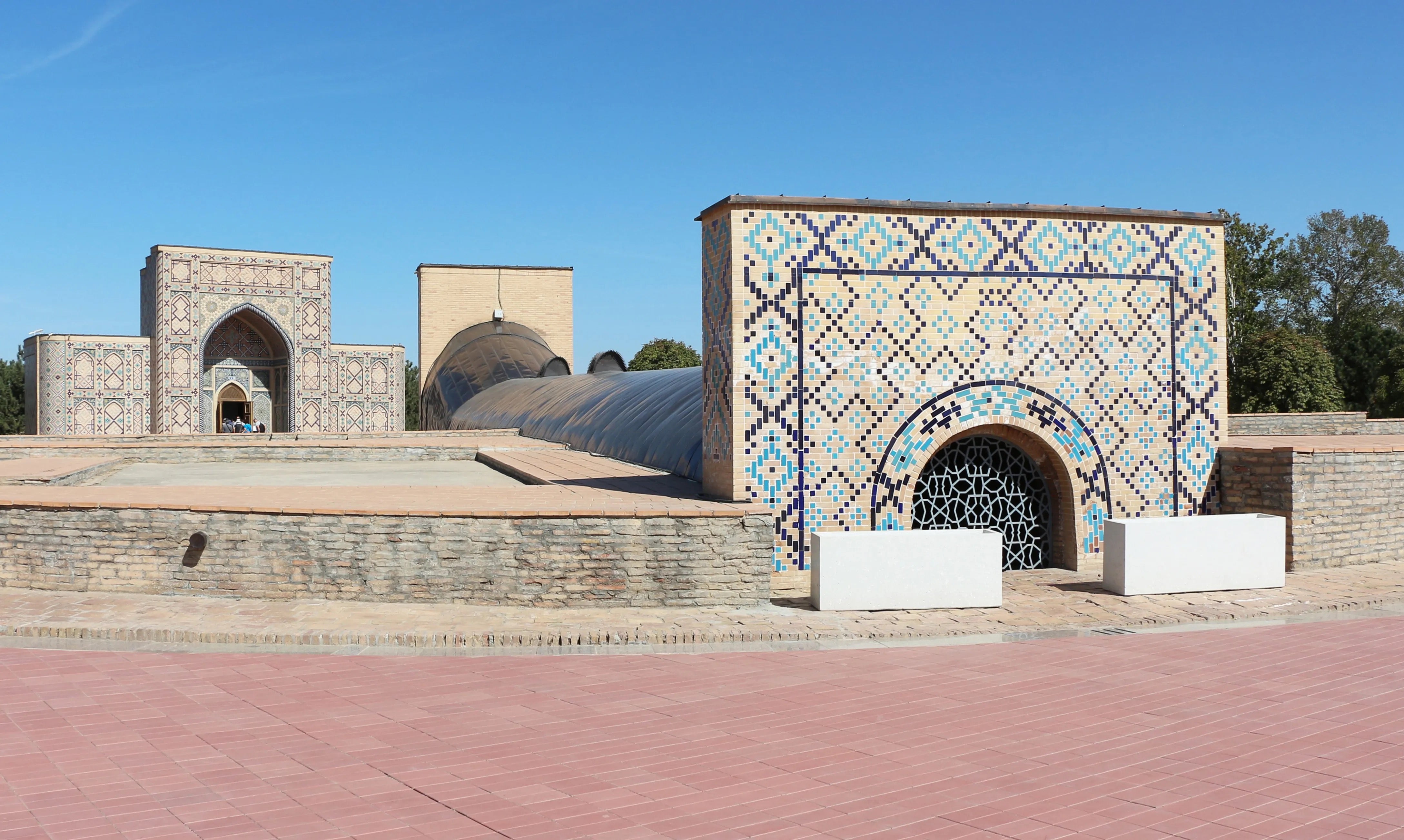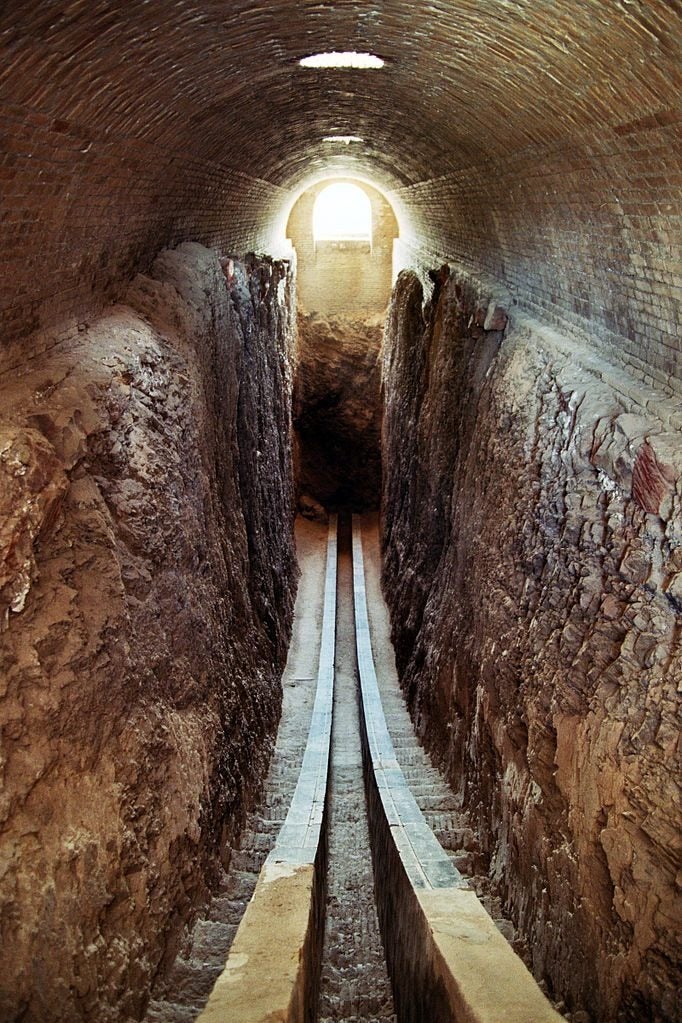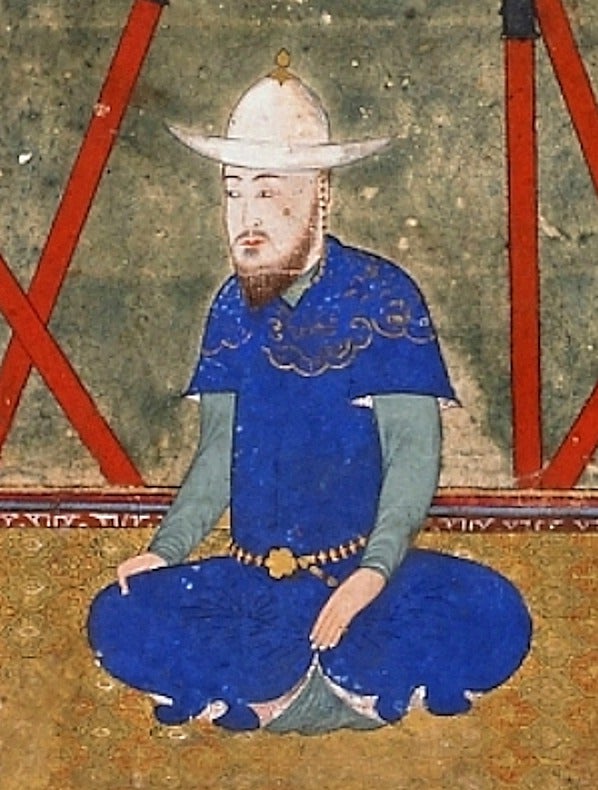
Atop a small hill, just north of Samarkand, Uzbekistan, lie the remains of what was once the most advanced astronomical observatory in the world. While the building itself has not survived, the underground section of its 151-foot-long sextant remains intact.
The observatory and the discoveries made there sprang from the passion of a single man, the 15th-century Timurid prince, Ulugh Beg. While many rulers have sought to increase the prestige of their courts by patronizing scientific projects, few have become great scientists themselves. Ulugh Beg was an exception. In addition to funding the observatory, he was one of its most prolific astronomers and mathematicians.
Born in 1394, Ulugh Beg was the grandson of the Turco-Mongol conqueror Timur (Tamerlane), whom he often accompanied on military campaigns. When Ulugh Beg was around 8 years old, Temur took him to see the ruins of the 13th-century Maragha Observatory, built by the Mongols in what is now Iran. This visit is said to have inspired a passion for astronomy that would shape both Ulugh Beg’s life and the history of science.
Timurid rulers, starting with Timur himself, regularly sent artists, scientists, and other intellectuals from conquered territories to their courts in Central Asia, sparking the Timurid Renaissance. After Timur’s death in 1405, he was succeeded by Ulugh Beg’s father, Shah Rokh. In 1409, Shah Rokh appointed his teenage son governor of Samarkand and its environs. As a young ruler, Ulugh Beg established two schools that specialized in teaching mathematics and theoretical astronomy. At the schools’ height, the students enrolled numbered in the thousands; their ornately decorated buildings, known as the Registan, continue to impress visitors to this day.

Once the schools were up and running, Ulugh Beg recruited the famed scholar Jamshid al-Kashi who, in the early 1420s, oversaw the design and construction of the observatory. Ulugh Beg’s efforts built upon a much longer tradition of stargazing in the Islamic world, which was used for practical means – such as determining the times of prayer, the start of the holy month of Ramadan, and the direction of Mecca – and as a tool to better understand God by learning about the universe he created. This latter pursuit reflected an impetus going back to Muhammad himself, who compelled Muslims to “seek knowledge from the cradle to the grave.”
At Ulugh Beg’s schools, students and scholars didn’t sit quietly over their manuscripts. Instead, they engaged in lively discussions, debating the strengths and weaknesses of various works, from Aristotle to Ptolemy and giants of Islamic science such as al-Biruni, Ibn al-Haytham, and Nasir al-Din al-Tusi. They also collaborated to solve complex mathematical problems and work through astronomical calculations. A letter from al-Kashi to his father written during this time enthusiastically describes both Samarkand’s intellectual vibrancy and Ulugh Beg’s regular and active participation in lectures and discussions.

At the observatory, Ulugh Beg and his team made several significant contributions to the history of astronomy. The most famous of these is the Zij-i Sultani, which was the first astronomical handbook and star catalog to be based entirely on new observations since Ptolemy’s work in the second century. It provided the coordinates of 1,018 fixed stars and charted the movement of the planets, Sun, and Moon. It also included a chapter on astrology, which was then viewed as a separate yet complementary science. Written in Persian, the Zij-i Sultani was rapidly copied, translated, and disseminated across the Islamic world. It made its way to Western Europe by the 17th century, where it was rendered into Latin, French, and English. As the most comprehensive and up-to-date astronomical handbook in the world, it remained in use as the standard set of star tables until the 19th century.
Located in Samarkand, Uzbekistan, the Ulugh Beg Observatory was built in 1420s by astronomer Ulugh Beg.
— Masood Ahmed (@ahmed_masood12) September 28, 2021
The ancient Islamic observatory was the site of the world’s most advanced astronomical studies for three decades.@MuslimCulture @iamrana @katherineschof8 @BiruniKhorasan pic.twitter.com/PqrtLiHd6c
Using the observatory’s remarkably precise instruments, Ulugh Beg also calculated the length of a solar year and the tilt of Earth with greater accuracy than later Western astronomers Copernicus and Tycho Brahe. In addition, al-Kashi’s works on both math and astronomy became standard textbooks across the Islamic world, educating generations of scholars from Istanbul to Delhi.
Perhaps more importantly, historians have begun to unravel how the work done in Samarkand provided the foundation for Copernicus’ revolutionary discovery that Earth revolved around the Sun. Ali Qushji – a student of both al-Kashi and Ulugh Beg – took the bold step of rejecting Ptolemy’s long-accepted epicyclic orbits for Mercury and Venus in favor of eccentric orbits. This rejection represented a necessary first step in the path to heliocentrism. While the chain of transmission has yet to be fully understood, Ali Qushji’s propositions – dated to around 1430 – found their way to Renaissance Italy (likely via late Byzantine scholars), where they were incorporated into mathematician Regiomontanus’ commentary on Ptolemy completed in the early 1460s. This commentary was, in turn, studied by Copernicus, who used it as the foundation for his groundbreaking Sun-centered model.
Unfortunately, the Samarkand Observatory closed its doors after only 30 years. In 1447, Ulugh Beg succeeded his father, but was overthrown and assassinated by his son two years later. In the years that followed, the Timurid world was wracked by political turmoil and the observatory was largely destroyed. Its astronomers fled, taking their knowledge and manuscripts with them. Luckily, the growing of interest in astronomy in both the Ottoman Empire and Europe kept the knowledge produced at Samarkand alive, continuing Ulugh Beg’s dream and helping shape the history of modern science.









